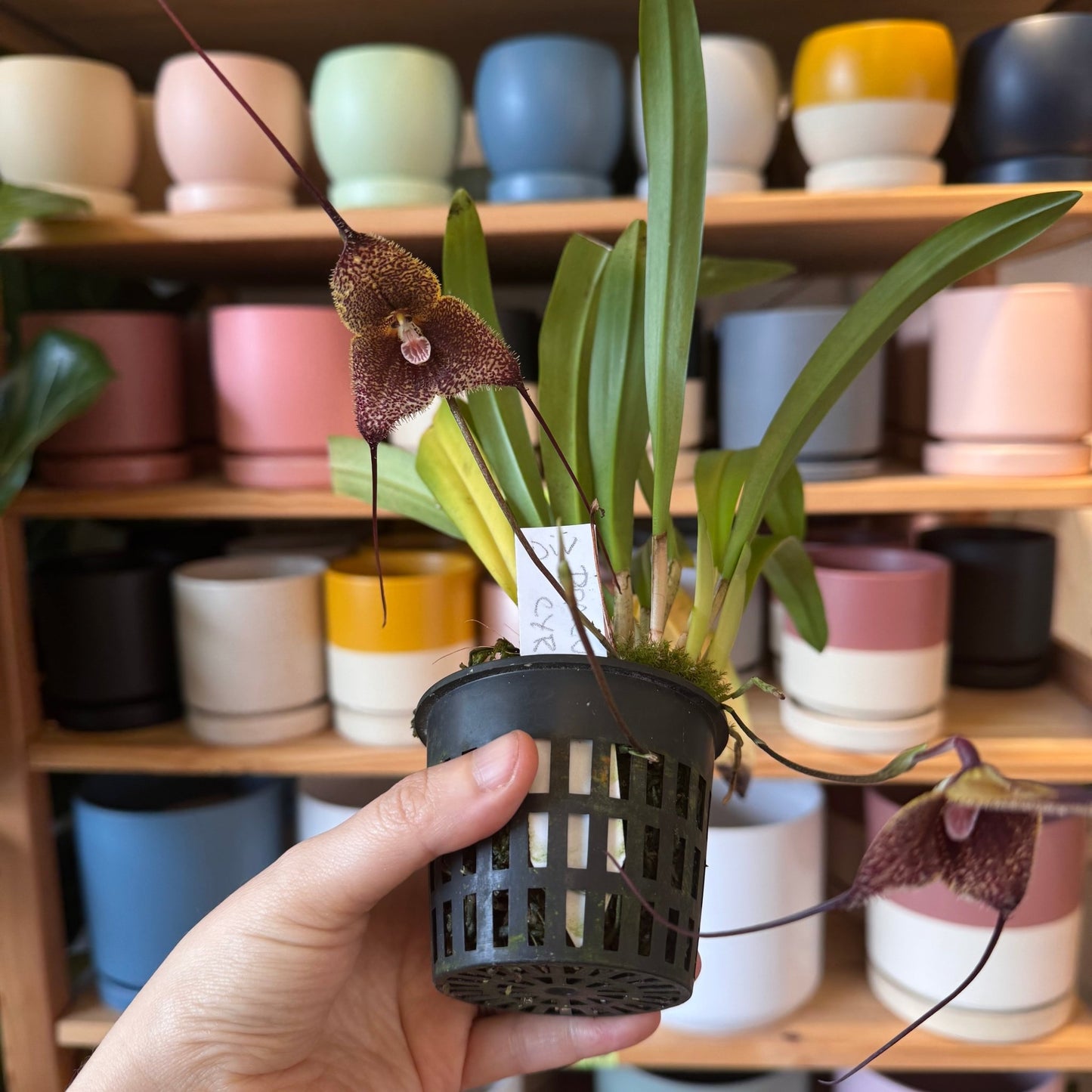The Plant Lady SF
Dracula Cyrano (Dracula chimaera x Dracula houtteana)
Dracula Cyrano (Dracula chimaera x Dracula houtteana)
Couldn't load pickup availability
Dracula cyrano
For lovers of the unusual
Dracula cyrano is a rare and highly sought-after orchid known for its dramatic, oversized lip and dusky coloration. It is a cross between Dracula chimaera and Dracula houtteana,
registered in 2001 by T. Hill.
Dracula orchids are native to the cloud forests of Colombia and Ecuador. Like all Dracula orchids, Dracula Cyrano thrives in cool, humid environments and rewards careful growers with remarkable, bat-like flowers that appear to glare back with a long "nose"—hence its namesake, Cyrano de Bergerac.
The blooms can emerge at any time of year but tend to peak in spring and fall. Flowers are usually dark maroon to nearly black, with a bold, protruding lip and flared sepals adorned with subtle spotting. Like other members of the genus Dracula, the blooms often emerge horizontally or downward from the base of the plant.
Light: Bright indirect light or dappled shade. Avoid direct sun.
Temperature: Prefers cool to intermediate conditions (50–75°F).
Humidity: 70+ % humidity is ideal. Good air circulation is essential.
Water: Keep evenly moist with high-quality water. Do not allow the roots to dry out completely.
Potting mix: Fine-grade sphagnum moss or a loose bark mix designed for moisture-loving orchids.
Fertilizer: Light, regular feeding with a diluted orchid fertilizer during the growing season.
How to grow Dracula cyrano indoors in the Bay Area:
Dracula orchids are notoriously sensitive to heat and stagnant air. In San Francisco and Oakland, they can often be grown successfully indoors with the help of a cool room, humidifier, and small fan. A terrarium setup or orchidarium with filtered lighting works especially well. Tap water from the Hetch Hetchy system is generally safe to use, but distilled or rainwater is preferred for sensitive orchids.
How to grow Dracula cyrano outdoors in the Bay Area:
Outdoor cultivation is only recommended for cool microclimates with heavy marine influence (like Daly City, Western San Francisco or Pacifica). Even then, protection from heat and dry winds is critical. If growing outdoors, choose a shaded, wind-protected area such as a north-facing wall or lath house and ensure consistently high humidity.
Bloom season: Intermittent, most often spring and fall
Pet safe: Yes
Difficulty: Advanced. Best for experienced orchid growers or those with terrarium setups.
We can ship Dracula orchids but we may cut off any aging blooms to do so. Under the right conditions your Dracula orchid will bloom again many times under your care!
Share


